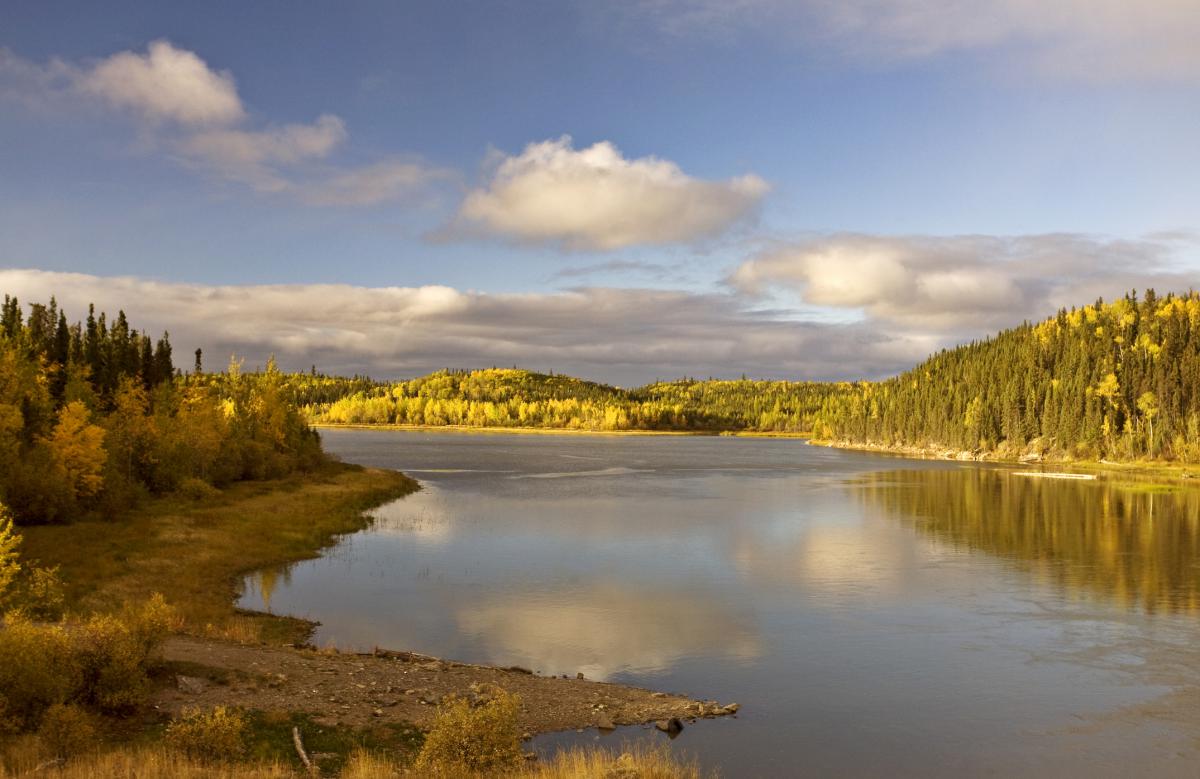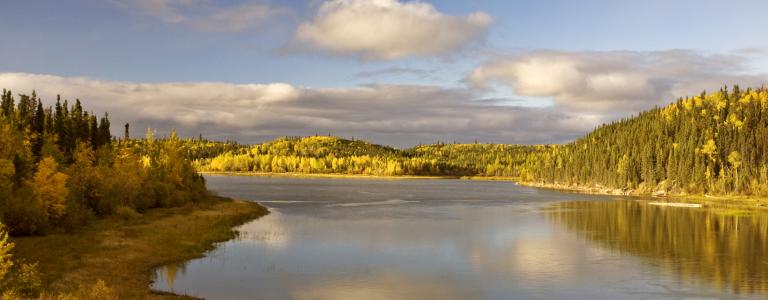Can Resource Management Boards Help Co-Manage Watersheds in Northern Manitoba More Effectively?
When it comes to watershed ecosystems in northern Manitoba, we see a need for coordinated strategic large-area planning to ensure that the benefits derived from these ecosystems are maintained.
Watershed ecosystems are crucial to human well-being, animals and the environment, as they provide environmental benefits such as clean water, aquatic habitat and regulating temperatures, as well as cultural and spiritual benefits.
When it comes to watershed ecosystems in northern Manitoba, IISD has identified the need for coordinated strategic large-area planning to ensure that the benefits derived from these ecosystems are maintained.
In this blog, Amanda Appasamy, a first-year master’s student at the University of Winnipeg and a summer intern here at IISD, explores the potential role of Resource Management Boards (RMBs) in the co-management of watershed ecosystems in northern Manitoba. She also looks more broadly at the use of Indigenous traditional knowledge in planning and decision making with the goal of maintaining long-term sustainability.
What are Resource Management Boards?
RMBs were established to co-manage natural resources in Resource Management Areas (RMAs), which refers to an area of traditional use. There are 10 existing RMBs and two proposed ones in northern Manitoba. Each RMA has a board that is represented by about 8–10 people, with half of the members appointed by the province and the other half by the Indigenous community. Indigenous and Municipal Relations (IMR) serves as the provincial lead in the management and implementation of the RMBs.
What do RMBs do?
Each RMB is mandated to develop and implement land use and resource management plans. The focus and priorities of each RMB are unique and vary depending on the area, economy and geographic location. Some of the RMB priorities in 2015 included co-management of:
- Resource and land use planning
- Water management
- Commercial and domestic harvesting activities
- Mineral development activities
- Wildlife and forestry management

How could RMBs help us co-manage large area planning in northern Manitoba?
The RMBs could play an important role in large area planning, based on their structure and mandate. While IMR is focusing on relationship building by respecting community leadership, consultation and communication, there are however, a myriad of factors that contribute to the challenges that RMBs face in resource management planning. For instance, some communities tend to have more pressing issues than planning, such as housing, forest fires and floods, among others. Moreover, leadership change is another issue, as elections every two years result in new board members, which poses problems for long-term planning.
According to David Hicks, the director at IMR, the organization is playing an important role in recognizing and incorporating Indigenous traditional knowledge in planning. However, this information is not available to the public at this time. Each community is unique in terms of their customs, traditions, rights, language and lifestyle. Hence, issues such as language barriers, trans-jurisdictional components, settlement agreements, sovereignty and land title claims often arise.
Some recommendations for improving resource use planning proposed by the IMR would be to first focus on relationship building and effective communication, and to involve, accommodate and ensure that there is mutual understanding of the planning process by each community. Having a full commitment from the Government of Canada to the agreements could help in terms of funding. Finally, more efforts will be required to establish a stronger link between regional planning and the specific priorities of the communities.
What does the future hold?
Exploring the role of RMBs helps us understand trans-jurisdictional challenges and socioeconomic issues faced by northern Indigenous communities and their lack of trust in the government due to the legacy of colonization. Even so, it is encouraging to learn that the IMR is actively working on a path towards reconciliation by building relationships and valuing community leaderships.
Amanda Appasamy is a first-year student in the Masters of Development Practice program (MDP) – Indigenous Development at the University of Winnipeg. The program aims to create learning experiences from the crucial contributions and innovations of Indigenous peoples in the practice of sustainable development since time immemorial, providing students with hands-on skills to promote reconciliation and to create just and inclusive societies. There are 28 MDP programs in the world and the MDP at the University of Winnipeg is the only one guided by Indigenous principles, rights, knowledge and experience as well as disciplines in economic, environmental, social sciences, health and management.
You might also be interested in
Good Morals, Good Marketing: The business case for taking climate action
The family-run Falcon Trails resort in Manitoba is taking its climate action to the next level.
Way to Go Winnipeggers
Winnipeg is getting even closer to increasing the protection of Lake Winnipeg from harmful algal blooms. And it's thanks to Winnipeggers of all stripes!
Undertreated Sewage Contributes to Harmful Algal Blooms
In this short brochure, the Lake Winnipeg Foundation and the International Institute for Sustainable Development, present their plans for an interim solution to Winnipeg's phosphorus woes.
City Voters Should Keep Lake Winnipeg in Mind
Unfortunately, sewage treatment infrastructure doesn’t tend to rank among the most popular of campaign topics in Canadian elections.
